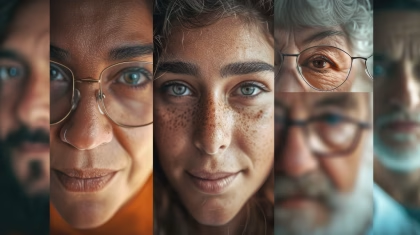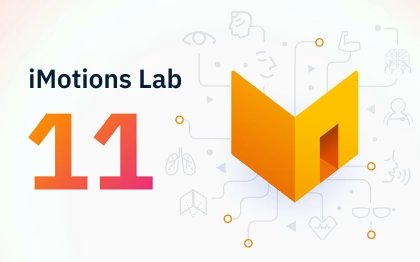Game theory is a fascinating field of study that explores how individuals make decisions in situations where the outcome depends not just on their own choices but also on the choices of others. It’s like studying the strategies in a chess game, but instead of chess pieces, we’re looking at human behavior and interactions.
Table of Contents
Understanding the Stag Hunt / Assurance Game
The Stag Hunt, also known as the Assurance Game, is a concept in game theory that was first introduced by the philosopher Jean-Jacques Rousseau in his 1755 work “Discourse on Inequality” [1]. Rousseau described a scenario where two hunters must decide whether to cooperate to hunt a stag or to hunt a hare individually. The game illustrates the tension between individual benefit and mutual cooperation.
The Scenario
Let’s imagine two hunters, Alice and Bob. They have come across a stag while out hunting, but they don’t know each other all that well. In fact, Alice takes a look at Bob and his questionable choice of hunting gear, and Bob, looks at Alice and wonders if she even can be trusted. She might just scare the stag off by accident and ruin the whole hunt. But they both know that they can’t hunt the stag alone. They have two choices:
- Hunt the Stag Together: If both Alice and Bob choose to hunt the stag, they must cooperate, and if successful, they both receive a high reward.
- Hunt Hares Individually: If either chooses to hunt hares instead of the stag, they secure a smaller, guaranteed reward regardless of the other’s choice.
Decision Matrix
The decision matrix for the Stag Hunt can be represented as follows:
| Bob: Hunt Stag | Bob: Hunt Hare | |
|---|---|---|
| Alice: Hunt Stag | (10, 10) | (0, 7) |
| Alice: Hunt Hare | (7, 0) | (7, 7) |
In this matrix:
- (10, 10): Both Alice and Bob cooperate to hunt the stag, resulting in the highest payoff for both.
- (0, 7) or (7, 0): One hunts the stag alone (unsuccessful), while the other hunts a hare (successful).
- (7, 7): Both hunt hares independently, receiving a moderate payoff.
Analysis of the Game
The Stag Hunt presents a classic dilemma of coordination. The game has two Nash equilibria:
- Cooperative Equilibrium: Both choose to hunt the stag (10, 10), which is the most rewarding but requires mutual trust.
- Non-Cooperative Equilibrium: Both choose to hunt hares (7, 7), which is safer as it guarantees a reward without relying on the other’s cooperation.
The choice to hunt the stag is known as the payoff-dominant strategy because it leads to the highest reward if both cooperate. However, hunting hares is the risk-dominant strategy because it provides a guaranteed reward even if the other player does not cooperate [2].
The Stag Hunt highlights a critical aspect of human interactions: the need for trust and coordination to achieve the best collective outcomes. It is relevant in various fields, such as economics, political science, and social psychology, providing insights into how individuals can overcome coordination problems to achieve mutual benefits.
Real-World Examples of the Stag Hunt
The Stag Hunt game is not just an abstract concept; it has practical applications in various real-world scenarios. Here are some detailed examples illustrating how the principles of the Stag Hunt play out in different contexts and the strategies used to overcome the assurance dilemma.
Global Governance and the Climate Crisis: A Stag Hunt Analogy
Imagine you’re at a neighborhood potluck where everyone has the choice to either bring a large, delicious dish to share (let’s say a roast turkey) or a smaller, individual snack (like a sandwich). If everyone brings a turkey, the potluck is a grand feast, and everyone benefits. However, bringing a turkey requires effort and trust that others will do the same. If you bring a turkey but others only bring sandwiches, you’ve spent a lot of effort for little return. This dilemma mirrors the global effort to combat climate change, and it’s a great way to understand the Stag Hunt dilemma.
The Climate Crisis as a Stag Hunt
In the context of climate change, think of the “stag” as significant, coordinated actions to reduce greenhouse gas emissions and invest in sustainable technologies. The “hares” are smaller, less effective individual actions that, while helpful, are not sufficient to address the global scale of the problem. Here’s where it gets tricky: all countries need to cooperate to effectively mitigate climate change, but each one is hesitant, fearing that others won’t do their part.
The Dilemma
Just like in our potluck analogy, if every country commits to substantial action (bringing the turkey), the world stands to benefit immensely. This would mean cleaner air, stabilized weather patterns, and a more sustainable future. However, the effort required to make such changes is significant, and there’s always the risk that some countries might not follow through, leaving those who made the effort feeling shortchanged.
Historically, this hesitation has been evident:
- Kyoto Protocol: The 1997 Kyoto Protocol was a first step towards collective climate action, but it faced challenges. Some major emitters, like the United States, opted out, fearing economic disadvantages if others did not commit similarly [3].
- Copenhagen Accord: In 2009, the Copenhagen Accord attempted to bring countries together, but it ended with weak commitments and disappointment as nations couldn’t agree on binding targets [4].
- Paris Agreement: The 2015 Paris Agreement marked a significant milestone with almost every country pledging to limit global warming to well below 2°C. However, the agreement relies on voluntary national commitments, and there are no binding enforcement mechanisms, leading to concerns about whether all countries will meet their pledges [5].
Historical Difficulties
The main historical difficulty has been the assurance dilemma: nations fear that their efforts will be wasted if others do not reciprocate. This lack of trust leads to countries opting for minimal actions that are guaranteed to benefit them individually, rather than risking significant investment in collective actions.
For example:
- Economic Competitiveness: Countries worry that strict environmental regulations will make their industries less competitive compared to those in countries with laxer standards.
- Short-term Costs vs. Long-term Gains: The benefits of mitigating climate change are long-term and global, while the costs are immediate and local, making it politically challenging to justify stringent actions.
Overcoming the Dilemma
Despite these challenges, there are strategies to foster cooperation:
- International Agreements: The Paris Agreement is a step forward, with regular reviews and increased transparency aimed at building trust.
- Financial Mechanisms: Initiatives like the Green Climate Fund provide financial support to developing countries, encouraging them to commit to climate actions.
- Technological Cooperation: Joint ventures in renewable energy and technology transfer can help countries meet their targets more efficiently.
While the Stag Hunt dilemma is evident in foreign policies, it is also very evident in every day life, just think of the classic example of choosing to work together as a group on a project, or try and do all the work on your own because you don’t quite trust the others to do their part.
The Stag Hunt: Group work analogy
Let’s imagine a scenario involving a group project in school. This is a situation many are familiar with, and it nicely illustrates the balance between cooperation and individual action.
Setting:
Imagine you are at school and you and three of your classmates have been assigned a group project in your history class. The project is a significant part of your grade, and you have two options:
1: Work Together on a Comprehensive Project (Hunting the Stag):
- If all four of you cooperate and put in a lot of effort, you can create an impressive project that’s likely to get an A.
- However, this requires trust that everyone will contribute equally.
2: Work Individually on Smaller Projects (Hunting Hares):
- Each of you can decide to do a simpler, individual part of the project. It’s less effort, and you can ensure your part is done well, but the overall quality of the project will be lower, likely resulting in a B or C.
Decision Matrix
Here’s how the payoff might look in terms of grades:
| Classmate B: Cooperate (Work Together) | Classmate B: Defect (Work Alone) | |
|---|---|---|
| You: Cooperate (Work Together) | (A, A) | (D, B) |
| You: Defect (Work Alone) | (B, D) | (C, C) |
In this matrix:
- (A, A): Both you and your classmate choose to work together, resulting in a high grade for both.
- (D, B) or (B, D): One decides to work hard on the group project (but the project fails due to lack of others’ contributions) while the other does their part alone, resulting in one high grade and one low grade.
- (C, C): Both choose to work alone, resulting in a moderate grade for both.
The Dilemma
Cooperation Benefits:
- If everyone trusts each other and cooperates, the group produces a top-notch project, and everyone benefits with a high grade.
Risks of Defection:
- If you decide to work alone because you’re worried your classmates won’t do their part, you avoid the risk of getting a bad grade due to their lack of effort, but you also miss out on the potential high grade that cooperation could bring.
- If your classmates think the same way, everyone ends up with a lower grade.
Strategies to Overcome the Dilemma
Clear Communication:
Setting Milestones
Peer Evaluation
Teacher Involvement
Using iMotions Lab to Study the Stag Hunt
To gain a deeper understanding of the decision-making processes in the Stag Hunt game, researchers can integrate biometric data collection using iMotions Lab. This advanced platform allows for the measurement and analysis of physiological responses during the game, providing insights into how these responses can predict actions and help develop strategies to enhance trust and cooperation.
Biometric Data Collection
Objective
Materials
Procedure
Predicting Actions and Enhancing Trust
Predictive Analysis
Developing Trust-Building Strategies
Feedback Loops
Example Analysis
Game Data
Biometric Data
Correlation Analysis
By integrating iMotions Lab into the study of the Stag Hunt, researchers can not only predict decision-making patterns but also develop and test strategies to enhance trust and cooperation. This holistic approach provides valuable insights into the physiological underpinnings of human behavior, paving the way for more effective interventions in collaborative settings.
Conclusion
The Stag Hunt game provides a valuable framework for understanding the dynamics of cooperation and trust in various real-world situations. By recognizing the assurance dilemma inherent in these scenarios, individuals, organizations, and even governments can implement strategies to foster collaboration and achieve collective benefits. Whether through legal frameworks, trust-building activities, public commitments, or shared incentives, overcoming the assurance dilemma is crucial for successful cooperation and mutual gain.
References
- Rousseau, 1755 ↩
- Skyrms, B. (2004). The Stag Hunt and the Evolution of Social Structure. Cambridge University Press. ↩
- UNFCCC. (1997). Kyoto Protocol. United Nations Framework Convention on Climate Change. ↩
- COP15. (2009). Copenhagen Accord. 15th Conference of the Parties. ↩
- UNFCCC. (2015). The Paris Agreement. United Nations Framework Convention on Climate Change. ↩











